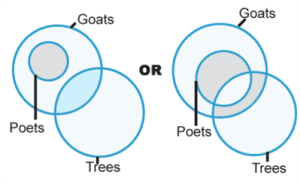Ratio and Proportion is easily one of those topics that most students are familiar with beforehand. In fact, it’s barely an extension of the mathematics taught in senior years of school. It also forms the foundations for more advanced mathematical and statistical topics like data interpretation, age-related problems, and more.
Every year, about 2-3 questions of Ratio and Proportion appear in the CAT exam in the Quantitative Aptitude section of the test. As a result, Students often overlook this topic and risk losing a perfect score in the CAT exam. So, in this article we thoroughly get you adept with this topic and help you avoid the potential of a reduced score.
Ratio:
In mathematics, we use ratios to compare values of the same type of data. It is also used to represent quantifiable measurements which change in relation to other quantifiable measurements. Another way we use ratios is to find out two quantifiable measurements in relation to their abstract parts.
We write ratios as follows: a:b or a/b. Here, a is known as the antecedent and b as the consequent.
Example: if the cost of a pencil is Rs. 5 and the cost of a pen is Rs. 10. Then, when we compare the two, the difference between them is Rs. 5. If we use ratios to compare them, then it is 5:10, which is 1:2.
In conclusion, we can say that, the cost of the pencil is half of the cost of a pen.
Properties:
1. The ratio doesn’t change when it is divided or multiplied by the same non-zero number:
- a:b = xa:xb = ya:yb, where x, y ≠ 0
- a:b = a/x:b/x = a/y:b/y, where x, y ≠ 0
2. Two ratios can be written as a fraction in order to compare them to each other:
- ay = bx ↔ a/b = x/y
- a/b > x/y ↔ ay > bx
- a/b < x/y ↔ ay < bx
3. If two ratios, a/b and c/d, are equal in relation to each other:
- a:b = x:y ↔ b:a = y:x (invertendo)
- a:b = x:y ↔ a:c = b:y (alternendo)
Sometimes, we also use the below properties to solve questions:
- a:b = x:y ↔ (a+b):b = (x+y):y (compenendo)
- a:b = x:y ↔ (a-b):b = (x-y):y (dividendo)
4. Denominator Equation Method:
The magnitudes of two ratios can be compared by equating the denominators of the two ratios and then checking for the value of the numerator.
Example: If we have to check two ratios like 8/3 vs 11/4
Then, (8× 1.33)/(3×1.33) vs 11/4
⇒ (10.66/4) < (11/4)
Proportion:
Ratio and Proportion go hand in hand. As such, Two ratios are in proportion to each other if the two ratios are equal. We use “::” or “=” to equate two ratios.
Example: Let us consider four pencils packs of Apsara, Classmate, Faber Castell, and Amazon Basics respectively. Their prices are 5, 10, 12, and 24 each respectively. The ratio of the prices Apsara and Classmate’s pencil packs is 5:10 which is 1:2. Then, the ratio of the prices of Faber Castell and Amazon Basics’ pencil packs is 12:24 which is 1:2. These two ratios are equal. So, they are proportional to each other.
Properties:
Let’s consider that a:b is directly proportional with c:d. It is written as a:b::c:d. Then,
- Product of means = Product of extremes, i.e., ad = bc
- a:b::b:c then b is called mean proportional, here, b2 = ac
- If a, b, c, d are in continuous proportion, then a:b = b:c = c:d
Preparation Tips:
1. Understand the concepts thoroughly instead of just rote memorizing the shortcuts.
2. Mixed-concept questions can also appear in the exam. Thoroughly go through all the concepts that can come in relation to ratios.
3. Solve the questions that are easier first and then, move on to the harder questions. Remember that each question weighs the same mark-wise irrespective of its difficulty.
4. Learn shortcuts that you can apply to a wide range of problems. Avoid learning very specific shortcuts.
Example Questions:
1. Rs. 5783 is divided among Sherry, Berry, and Cherry in such a way that if Rs. 28, Rs. 37, and Rs. 18 be deducted from their respective shares. They have money in the ratio 4:6:9. Find Sherry’s share.
Options:
(a) Rs. 1256
(b) Rs. 1228
(c) Rs. 1456
(d) Rs. 1084
Solution:
We know that,
when we deduce 28, 37, 18 rupees, respectively from Sherry’s, Berry’s and Cherry’s shares, the resultant ratio is 4:6:9.
Let’s assume the reduced values as 4x, 6x, 9x.
Then,
Sherry’s share = 4x + 28
Berry’s share = 6x + 37
Cherry’s share = 9x + 18
Accordingly,
(4x + 28) + (6x + 37) + (9x + 18) = 5783
⇒ 19x = 5783 − 83 = 5700
⇒ x = 300
Sherry’s share = 4x + 28 = 4(300) + 28 = 1228
The correct option is Rs. 1228
2. If the work done by p men in (p + 2) days is to the work done by (p+4) men in (p − 1) days is in the ratio 1:1, then the value of p is
Options:
(a) 2
(b) 4
(c) 6
(d) 5
Solution:
We know that,
Ratio given = Work done by no. of men: Days taken to do the work
So,
p:(p + 2) = (p + 4): (p − 1) = 1:1 —Equation
Accordingly,
substitute (a) 2 in the above equation,
⇒ 2:0 ≠ 6:1 ≠
(a) is eliminated
Substitute (b) 4 in the equation
⇒ 4: 6 = 8: 3 = 1:1
The correct option is (b) 4
We hope this article clarified any conceptual doubts you had regarding Ratio and Proportion. If you have any doubts, write in the comment section below. Our CAT coaching Kolkata will get back to you ASAP.
Best of luck!






